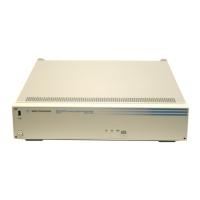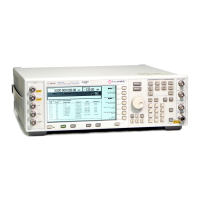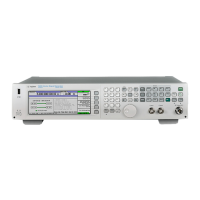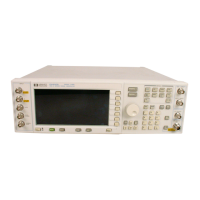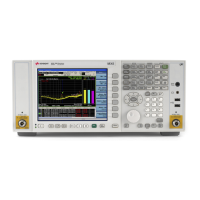Using the Tracking
Feature
Peaking
Peaking is the function that aligns the output lter (YTM) so that
its passband is centered on the RF output, in CW or manual-sweep
mo de. Use peaking to obtain the maximum available power and
spectral purity, and best pulse envelopes, at any given frequency
above 2.0 GHz. The YTM is inactive for the low band frequencies
(10 MHz to 2.0 GHz).
To p eak at the present CW frequency:
Press
4
USER CAL
5
.
Select
NNNNNNNNNNNNNNNNNNNNNNNNNNNNNNNNNNNNNNNNN
Tracking Menu
NNNNNNNNNNNNNNNNNNNNNNNNNNNNNNNNNNNNNN
Peak RF Once
.
This causes an instantaneous execution of the peaking function. This
is a one-time implementation of the p eaking, where the function is
turned on and then turned o.
To p eak at the present CW frequency, and continue to p eak at new
frequencies as they are entered:
Press
4
USER CAL
5
.
Select
NNNNNNNNNNNNNNNNNNNNNNNNNNNNNNNNNNNNNNNNN
Tracking Menu
NNNNNNNNNNNNNNNNNNNNNNNNNNNNNNNNNNNNNNNNNNNN
Peak RF Always
.
If \peak always" is on (denoted by an asterisk next to the key
lab el) for an extended p erio d of time, the p eaking function will
automatically repeak every seven minutes.
Tracking
Auto track is a more extensiveversion of p eaking. It causes all of
the YTM tracking calibration constants to be aligned and requires
approximately 40 to 90 seconds to complete. Tracking is p erformed
from 2.0 GHz to the end of the sp ecied frequency range.
Note
If the swept signal generator does not have a step attenuator,
terminate the RF OUTPUT with a go od 50 imp edance match such
as a 10 dB attenuator or a p ower sensor to prevent mistracking.
To enhance the power output and sp ectral purityof swept
mo des, and to improve tracking performance (especially in harsh
environments having wide temp erature variations):
Press
4
USER CAL
5
.
Select
NNNNNNNNNNNNNNNNNNNNNNNNNNNNNNNNNNNNNNNNN
Tracking Menu
NNNNNNNNNNNNNNNNNNNNNNNNNNNNNNNN
Auto Track
.
Getting Started Advanced 1-49

